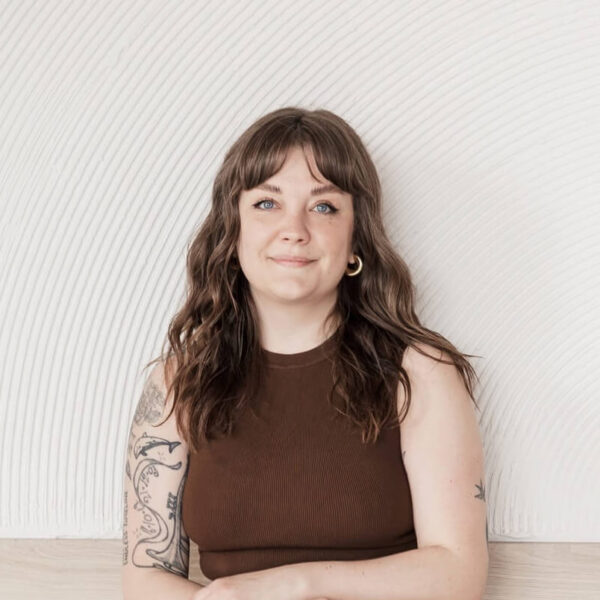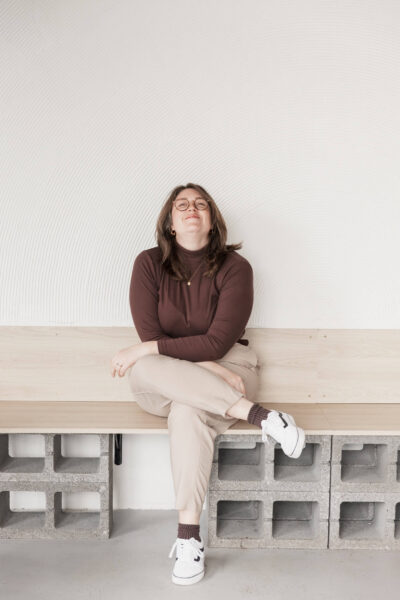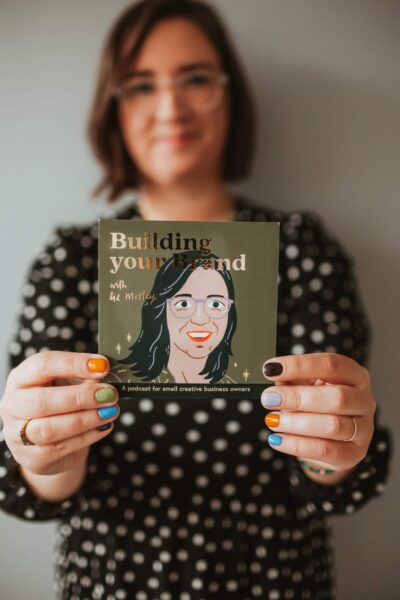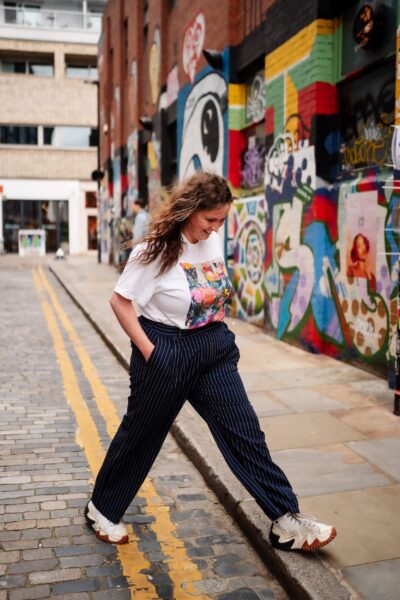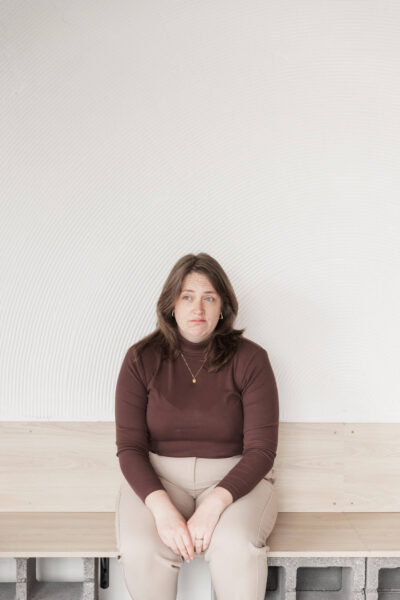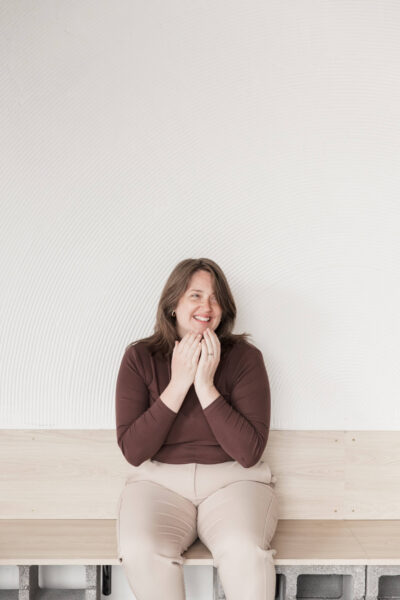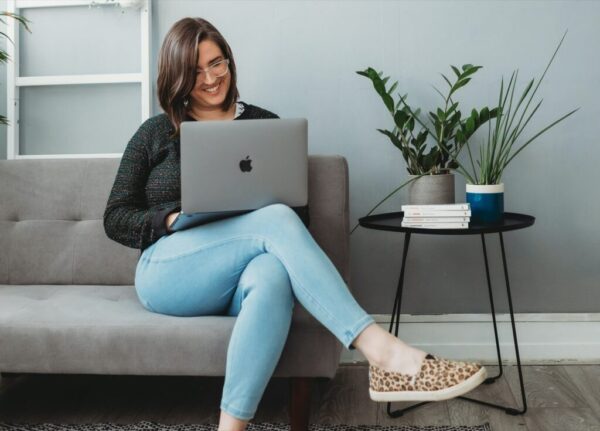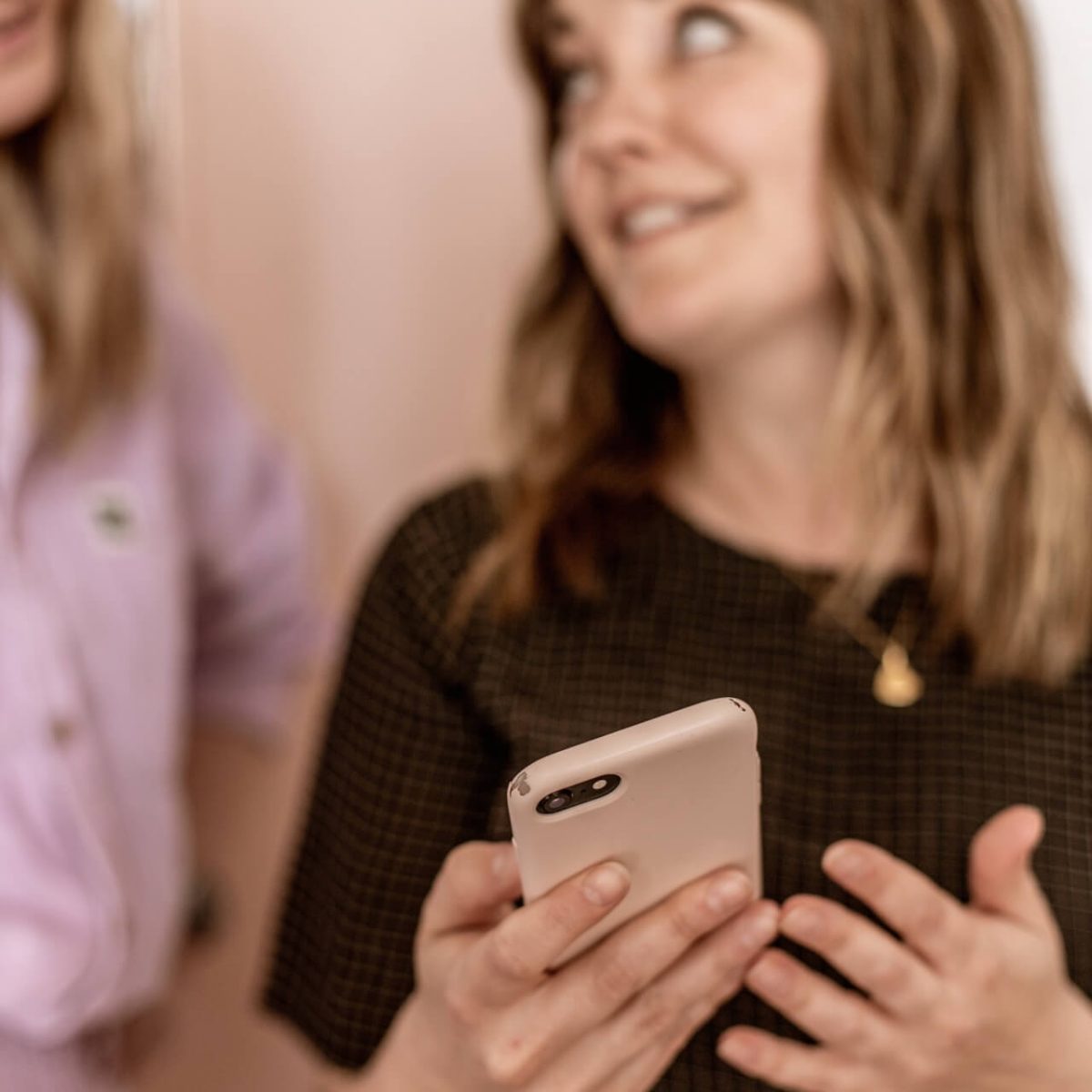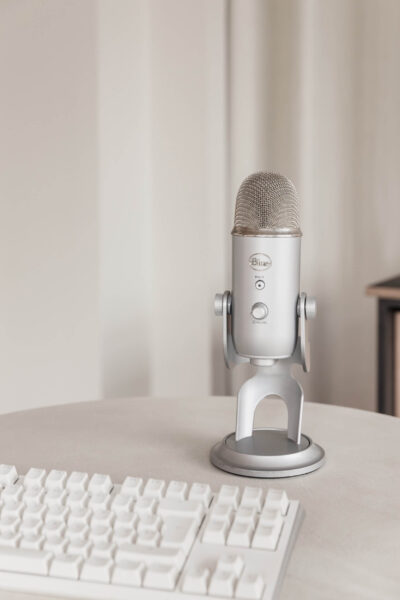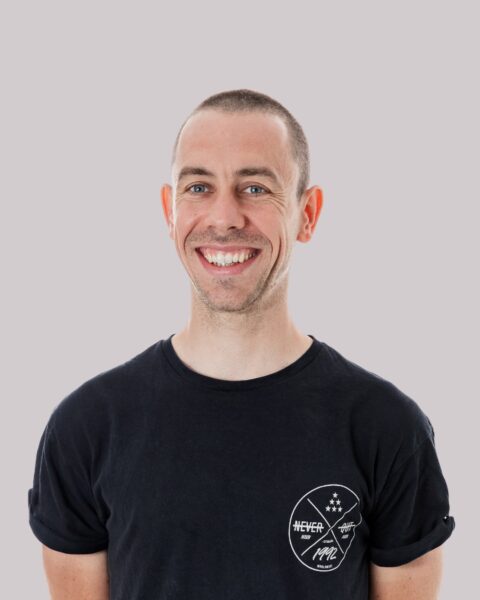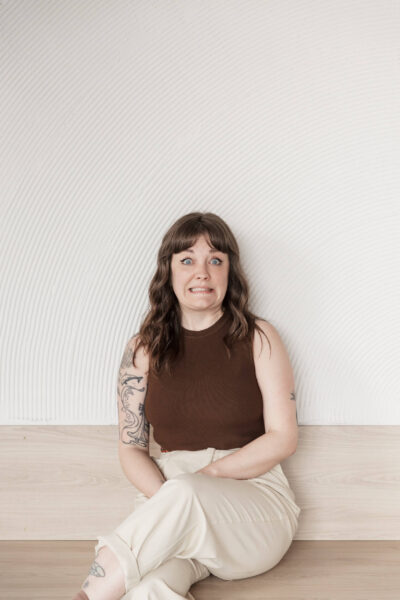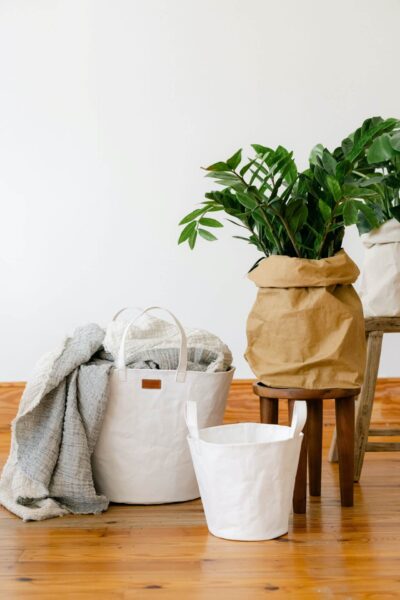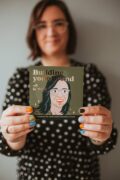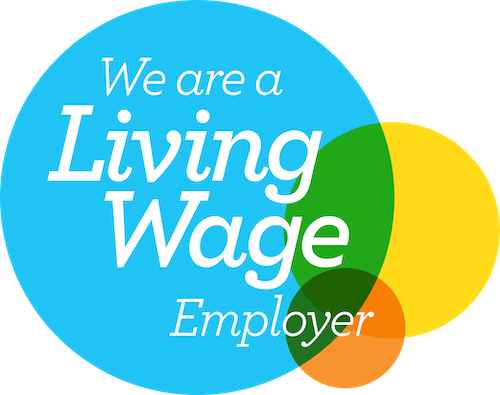After an accidental couple of months off while we were extra busy building websites, writing blogs for our clients, and meeting lots of creative people at The Podcast Show, I’m back with the next instalment of our (Small) Business of Podcasts series, in which we chat to all sorts of brilliant podcasters about the inspiration, motivation and success of their podcasts.
Marina Skua is a yarn dyer and knitwear designer living in the South West of England, and you can watch her podcast on YouTube, where she talks about the yarn she dyes, her current knitting and craft projects, and some seasonal making with a sustainable angle.
She describes it as, “A cosy video podcast focusing on yarn crafts, natural fibres, and slow, sustainable making.”
There are new podcast episodes monthly, with additional videos and other goodies available on Marina’s Patreon.
Let’s take a peek behind the scenes of Marina’s podcast…
1. Why did you start the Marina Skua Podcast?
I loved sharing my knitting projects, designs in progress and new yarn colours on Instagram and in my newsletter, but found I couldn’t communicate all I wanted to without writing walls of text that nobody was going to read.
I really enjoyed talking about my products and processes at yarn shows and, to be completely honest, when I did short chatty videos on Instagram Stories, I got a disproportionate number of messages (mostly from non-UK people) about how much they liked my voice and accent.
A longer-format, more chatty way of showing my work and values seemed a great way to proceed, and the choice of video seemed obvious, because listening to people try to describe knitwear details, or how pretty a yarn colour is on audio podcasts is always frustrating, and it’s much easier to create nice vibes with visuals.
2. “90% of podcasts don’t get past their 3rd episode” – what helped you to keep going?
It honestly didn’t occur to me not to continue. It took quite a long time for me to decide to start the podcast, and I wasn’t just going to quit without seeing how the next episode would do.
I found I enjoyed creating videos a lot more than I was expecting to, and because it’s on YouTube and people can leave comments, I get some really nice messages about both the videos themselves (apparently my crafty people like calm nature b-roll), and about the yarn and knitting designs I share. Any kind of positive feedback is a great motivator.
Despite that, I have had to make some changes to how I film to make it feasible to continue. I’ve had a kid since starting the podcast, so now have less work time and need to be much more focused with my schedule. But I’ve tried to make tweaks in the subtlest ways possible to create videos my audience is still going to enjoy watching.
3. What has been an unexpected business or commercial benefit of podcasting?
Meeting people at yarn shows and events who have watched my videos is just so rewarding, and quite a few people make a point to come and visit my stand especially. Because I keep the podcast fairly conversational and casual, viewers feel like they already know me a bit.
It’s wonderful to start chatting to them knowing they have some background on my yarn and designs (and realise I’m probably going to get dorky about things like how yarn is produced and why you’d use certain yarns for specific projects).
Podcasting has also been surprisingly great for networking and building contacts. I’ve become in-real-life friends with a few fellow knitting podcasters, one of whom kindly helped on my stand at a recent yarn show. When you work on your own almost all the time, that kind of solidarity is so valuable.
4. Where have you found the most success in monetising your podcast?
I started on Patreon a good while back, where I offer bonus crafty content as well as other benefits (discount, early access to shop updates etc.) and have a lovely, loyal following there.
Even when I took months off for maternity leave and wasn’t producing anything, a lot of people chose to stick with me as subscribers to support my business. I was genuinely surprised, and it made such a difference to my motivation on coming back to work knowing there were people patiently waiting for me to start up again.
5. What’s your least favourite thing about having a podcast?
The set-up faff! I film in my living room, so each time I need to set up the lights, camera, microphone, giant pile of knitting projects etc., then get everything finished and packed away before my family comes home. If I’m recording a process that has a few stages over a couple of days the equipment management can be a real chore.
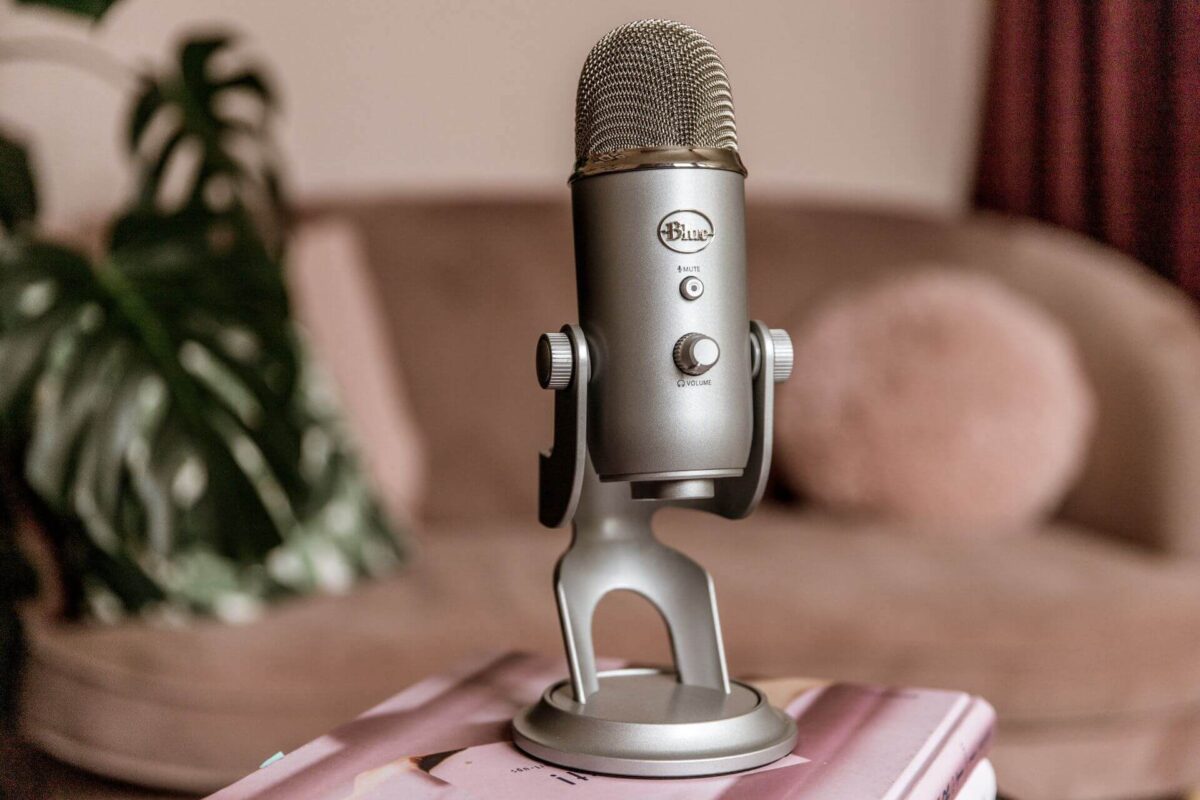
Exceptional websites for brilliant podcasts
Check out our brand new website design package – a dedicated, optimised website for podcasts.
6. What aspects of your podcast production do you outsource or delegate?
Absolutely none – I film, edit and produce all of it myself. It means lots of faffing with tripods, and sometimes I really wish I had a camera person to speed things up and get more interesting and less static shots. But at least I don’t have a script to worry about!
I make a big pile around me of craft projects, designs I’m working on and yarn that I want to talk about, and that acts as my prompt list.
I really enjoy editing though. For me it’s not as involved a process as it is for some, because my style is fairly straightforward, but selecting shots and the occasional bit of music to get things to flow nicely is good fun.
As recommended by Marina
We asked Marina to recommend 3 people, organisations or resources that have helped her as a podcaster…
- iMovie for editing – weirdly I haven’t used it for years because I had to get Creative Cloud for various reasons, and now use Premiere Pro – but iMovie was free with my laptop and pretty solid software, and there’s no way I would have started producing videos without it.
- Free Music Archive for music; it’s possible to spend far too long browsing for the perfect tunes.
- Katt Weaver – fellow knitty podcaster friend and lovely human, who has unfailingly given shout-outs about my yarn, designs and videos at every opportunity. We should all have at least one friend like Katt.
Wasn’t that a lovely read? You can watch Marina’s podcast on YouTube, and if that isn’t enough content for ya, you can support her on Patreon for extra videos and other goodies.
Make sure to visit her website for all the beautiful, natural hand-dyed yarns and patterns, annnnndddd finally, follow Marina on Instagram for regular updates.
